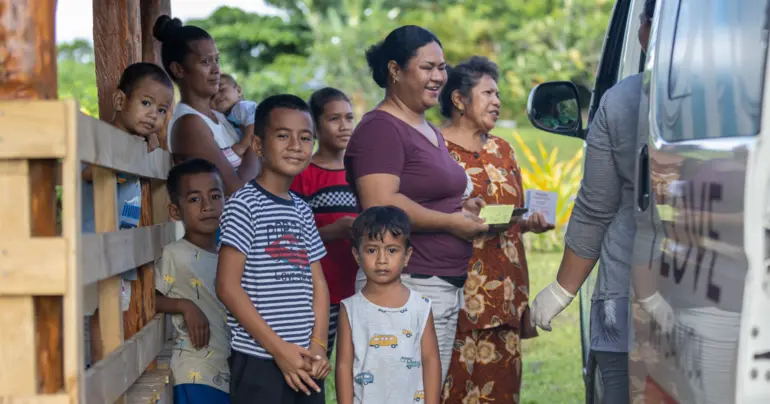Why does the missing weather equipment on Apolima and Manono matter?
Nine cyclones have been predicted in the region for this cyclone season that began with the new month and ends in April. Weather events are becoming extreme. Cyclones have intensified, we have experienced above-average rainfall and or extreme dry weather.
Experts worldwide agree that early warning systems and the study of weather patterns have never been more important. The World Meteorological Organisation states that the damage caused by a disaster can be reduced by 30 per cent if an early warning is issued within 24 hours, and that, on average, from 1970-2019, a weather, climate or water-related disaster has occurred every day.
According to the WMO, the number of disasters has increased fivefold over 50 years (1970-2019), and 50 per cent of all disasters recorded over a 50-year period were related to weather, climate, and water hazards. The WMO has predicted that globally, we could avoid losses of US$3-16 billion per year through the use of early warning systems.
So, should the fact that Manono and Apolima have no tide gauges, and the automatic weather station on Manono is currently non-operational, be a concern? These are just two small islands with small populations. Yet, the accuracy of data from these two islands matters. The unavailability of data from such equipment limits real-time monitoring of sea levels and weather conditions.
The non-functioning equipment and the ones that are not there also impact making long-term assessment for the people of the two islands. Data that can help mitigate future climate disasters and provide information that will lead to better infrastructure, such as wharves for the islands.
Proper weather equipment is critical for accurate forecasting in times of climate change, serving as the foundation for early warning systems, climate research, and effective disaster risk reduction. In a changing climate with more frequent and intense unusual weather patterns, reliable data collection is more important than ever to protect lives, property, and economies.
Data is important in making short-term and long-term predictions. The world is moving fast toward early warning systems. In Samoa, the meteorological service has been efficient and they are staffed with qualified personnel, but it will always be a battle to get accuracy if data is missing and there is not enough equipment.
The 2009 tsunami is a clear example of how early warning systems could have helped save lives and livelihoods. That is why equipping the meteorology division is vital. A proper functioning weather service with the latest technological support and equipment also helps the nation in climate change adaptation and opens doors to climate financing as well. Hopefully, fixing the automated weather station in Manono and setting up others are in the plans.
Weather instruments have a significant economic impact, affecting industries ranging from agriculture to aviation. Farmers rely heavily on weather forecasts to plan their planting, harvesting, and irrigation schedules. Air traffic controllers and pilots depend on weather data to ensure safe navigation and landing. The insurance industry uses weather data to assess risks and set premiums.
Weather instruments are not just tools; they are essential for our daily lives, safety, and economic stability. From predicting weather patterns to monitoring environmental changes and providing early warnings for natural disasters, these devices play a critical role in ensuring our preparedness and resilience.
Continuous investment in weather technology is crucial to maintain the accuracy and reliability of weather forecasts. By staying informed and prepared, we can better respond to weather events and mitigate their impact. Weather instruments are more important than ever, and it is essential to appreciate and support their continued development and use.











